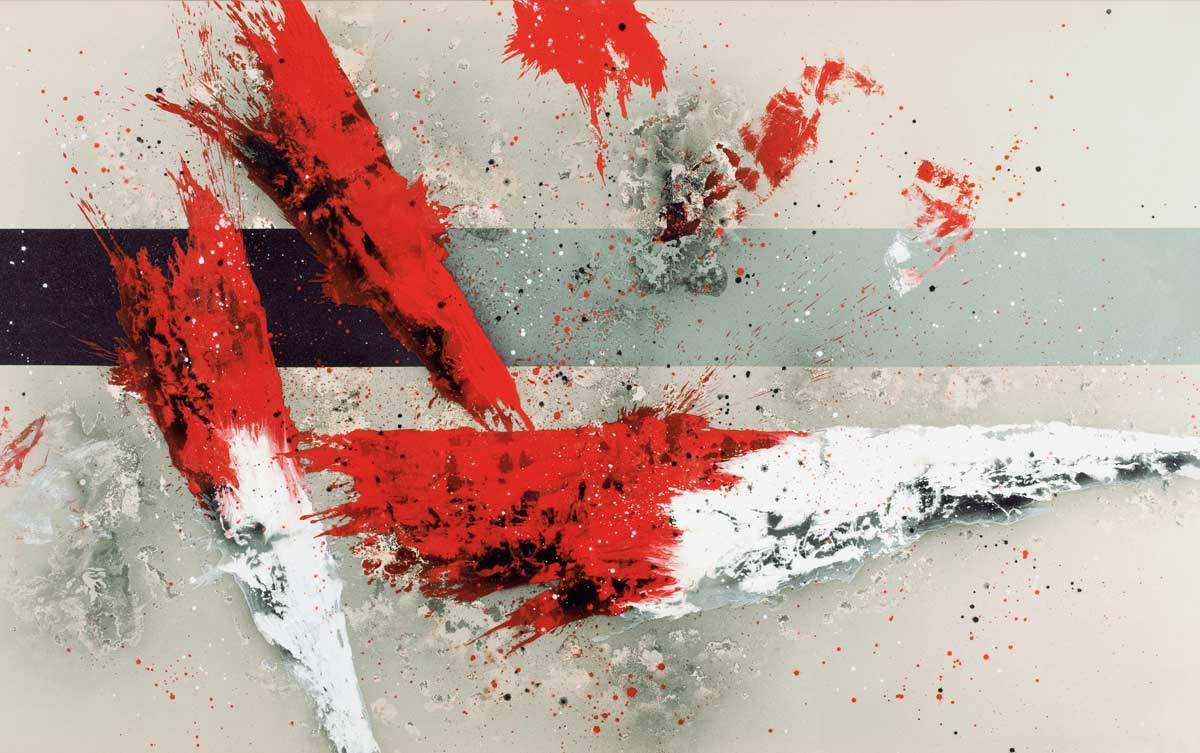
Fernando Huici.
Fernando Huici. Las Formas del Silencio.
Libro monográfico “Las Formas del Silencio. Antología crítica (los años noventa). Enero 2005.
BENEATH THE SKIN
Fernando Huici
Sometimes, without our knowing why, the first, fleeting impression suddenly reveals to us the essential nature of an encounter. We immediately love or hate a place, a person or a thing. We can’t help it. We can’t give a reason – there is no reason. This is what we call intuition. Often afterwards, when the reasons become apparent, when we become better acquainted with the person, place or thing, we may learn other key aspects… none of which can supplant the brutal clarity of our initial intuition.
My first, almost automatic, emotion on seeing the recent series by José Manuel Ciria was the crazy, impossible certainty –ruled out by looking at them– that they were like glass. An absurd suspicion associated them with that hard, brilliant but fragile, material: a substance with no secrets, mysterious, transparent and reflective. A substance which, when we look at it, seems to give back what is on both sides, trapping or freezing the inside and outside worlds, merging them into one.
Intuition is like a knife; it is a double-sided instrument: one, like the hilt that we hold onto as if to anchor ourselves to the world, is accidental, epidermal, crafted by apparently inert details acting as detonators; the other, like the blade, is incisive, sparkling, allowing us to pierce the skin of reality.
In this case, the incident is awoken, above all, by one aspect of the work process, specifically the materials: the varnish, which concludes and closes the work and the process; and, even more intensely, the very support, the plastic canvasses chosen by Ciria as the basis of the cycle.
Both act as freezing, essentially distancing elements, within a process that is, however, basically warm and emotional, pure nuance and tremor. The main driving force of the process resides in chance. Chance, at times, operating in the very choice of the support: awnings containing specific accidents, acting as objets trouvés.
As it happens, the very decision of using plastic canvas as the general support for the series arises precisely, in the first place, from its optimum potential as a reply to the random factors that determine a substantial part of the work method developed by Ciria in this series. Their impermeability and slipperiness allow complete, continuous freedom of the flow of the pictorial material that the painter deploys on the horizontal canvas. On the other hand, the hard profile of the ridges created by the relative elasticity of the material leave their mark as a kind of accidental, discontinuous hatching.
These extremely physical properties also make the canvas a decisive accomplice for the most subjective side of the process or, at least, for the singular techniques used by Ciria to establish a specific dialogue between chance and control, a method which could be defined as rectification.
Painting here is understood as removing, as the partial elimination of pre-existing matter, instead of incorporating new matter. A language that preaches on the basis of silence and negation. We are inevitably reminded of a mythical example of the American vanguard, the famous drawing by Willem de Kooning, erased by Rauschenberg. Ciria’s activity, in short, establishes a conceptual cadence of very similar steps, except that, in this case, they provoke a resonance of distinct nuances. He does not erase gestures or, by doing so, erase the paradigm based on the idealisation of subjectivity, but rather, on the contrary, the result is that of a random process, in which by means of something akin to minor negative gestures, he intervenes precisely in a subjective manner.
Oil paint, ashes…, sumptuous, residual materials, stable or evanescent, substances for an alchemy between two secretly allied antithetical forces – chance and the correcting force. In this strange symbiosis, a forced accident is followed by a decreasing inertia, which is redirected towards an unstable resting point.
How, then, does this theoretically infinite temporal dialogue end? By means of a strategic gamble, the moment when the painter suspends the task of rectification. The choice of this moment acts as a throw of the dice that, once they have been cast, fatally abolishes chance. The same thing occurs with the definitive format of the work, sectioned from a much more extensive territory. Ciria defines the limits that will transform the process into an object, thus literally cutting the journey of the picture.
In this instant, everything seems to be finished: the dice have been cast; the memory of the dialogue is suspended on the horizontal surface. However, one fundamental step remains. The work is still, in this regard, highly unstable. This instability which has in fact permitted the entire creative process, likewise holds the essential poetics of the entire cycle, the mental dimension that transmits both the sense of action and the reading of the piece.
Fragility, as an impeccable metaphor for the irreducible condition of the creative experience, conceived as an unequal combat between reason and nature in the unattainable trail of desire, ultimately unencompassable by the artistic object, if not as a shadow. This gives us the climate of the piece, of its internal breath. Just then, from this awareness, the varnish intervenes to close the circle. On consolidating the piece, definitively and irreversibly, it simultaneously abolishes the essential, amorphous and unstable temporality of the creative process. The filter thus erected before our eyes does not alter the identify of what is beneath its skin, its ineffable tremor; but rather separates us irremediably from its breath, freezing the memory of that vertigo in the very act of looking.
